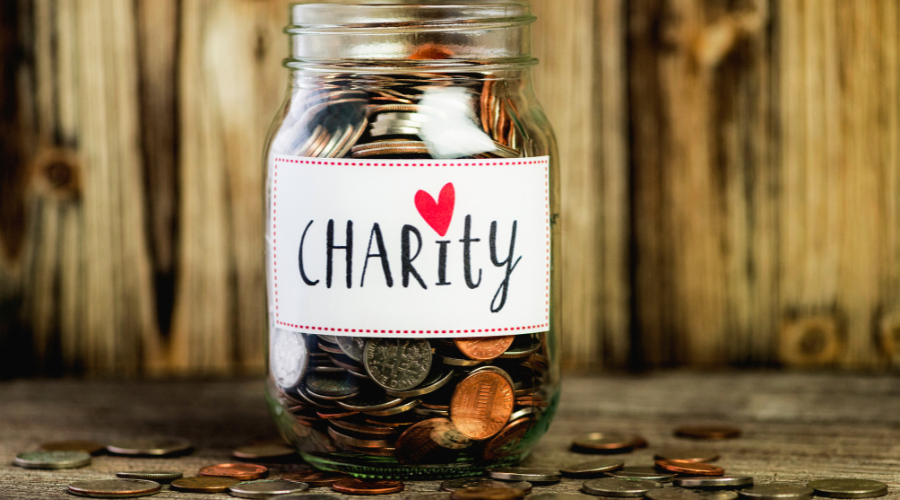How Do I Check if a Charity is Legitimate?
Last Updated: October 15, 2024

Charitable giving is on the rise. In 2023, U.S. individuals, corporations, and other organizations gave $557.16 billion to groups that help with everything from feeding the hungry to improving educational opportunities. This was a 1.9% increase from the previous year.[1]
Despite the willingness of Americans to help, not everyone is so giving. Scammers and thieves may try to prey upon the kind hearts of donors to steal money from them through fake charities.
You may be asking, "How do I check if a charity is legitimate before giving my cash?" Here are some tips for finding real organizations, along with safe ways to donate in a way that truly helps others.
How To Tell if a Charity Is Legitimate
One way to start vetting a charity is to use the IRS Tax-Exempt Organization Search (TEOS) tool. While it won’t tell you if the charity is spending its money wisely, it can tell you if it’s a verified, registered organization.
The TEOS tool gives additional information, such as its tax-exempt status and eligibility to receive tax-deductible gifts. Searchers can also see tax filings related to the charity.
How To Spot Charity Fraud
Beyond looking for a charity’s tax-exempt status with the IRS, you may notice red flags about an organization. The following clues may signal that a charity isn’t real or that it gives very little to those it claims to support. A 'charity' may be a scam if it:
- Has an unclear mission with little information about what it does or who it helps.
- Sends unsolicited emails, postal mail, text messages, or emails and doesn’t respect requests to be placed on the do-not-call list.
- Uses high-pressure messaging to try to get donations quickly and with urgency.
- Refuses to give you additional information about the charity, such as a website, mailing address, or more information for doing additional research.
- Has a name that closely resembles another well-known, reputable charity.
- Pops up around the same time as a recent, high-profile disaster, such as a weather incident, fire, or conflict.
Be wary of charities with bold claims about how money is spent. Phrases such as “100% of proceeds” or “all children” may sound too good to be true — and very well may be.
5 Tips To Follow When Giving to a Charity
So, what happens if a charity seems legitimate, and you want to give? Follow these suggestions to reduce risk and ensure

more of your money goes to organizations that truly help others.
1. Choose Charities with a Good Reputation
Start with charities you already know or that trusted friends or family members have given to. Ask how they heard of them and what they have seen funds do for those who genuinely need it.
2. Use Currency Carefully
Don’t give using cash, gift cards, wire transfers, or cryptocurrency (like Bitcoin.) If the charity asks you to give this way, it could be a scam. Opt for credit cards or a check instead, which a bank can stop payment from if needed.
3. Be Smart Online and Offline
Even if giving to a reputable charity, avoid clicking on links or opening email attachments from an unsolicited message. If a charity calls you at home or work, ask if you can take some time to consider your gift. Then, go directly to the charity’s official website by typing out the web address. Many charities use a .org web address rather than a .com.
4. Protect Personal Information
Don’t share sensitive financial information beyond what you need to pay with your credit card or check. If something doesn’t feel right, put off the payment until you can investigate further.
5. Check for Tax Benefits
Charitable contributions may be tax deductible, depending on how you file your tax return. Check the IRS website for full details of the forms required and possible situations where this may make the most sense.
What To Do if You Suspect Charity Fraud
In an ideal world, it would be easy to notice the red flags and avoid charity scams altogether. So, what happens if, after researching, you believe a charity may be fraudulent?
If no money was given, there’s time to figure things out. Take a moment to verify through the IRS TEOS website and go through the steps to vet a charity. It may be that a charity is new but still very legitimate. If the charity ends up being fake, contact the Federal Trade Commission (FTC) or the state consumer protection agency where you live.
If you did give money, act right away by doing the following:
1. Contact your bank or credit card company and alert them to your concerns. There still may be time to put a stop payment on the transaction or reverse the charges.
2. Let the local authorities know about the suspected crime. Then, the scam can be reported on the FTC website.
3. Tell others about the situation. While it may feel embarrassing to be a victim, it’s possible the event can help others. Fraudsters may be contacting others in your area, and speaking out can save them from losing their hard-earned money, too.
Stay Vigilant To Prevent Charity Fraud
Scams evolve quickly over time, and the fake charities that robbed people today may have different names or strategies tomorrow. By doing thorough research and keeping your personal information confidential, these charity crimes can be prevented in the first place.
It may also help to keep a close eye on your bank accounts, logging into your checking and savings accounts often to look for suspicious activity. Fraudsters may not always seek permission before they strike. Using the tools available by the bank (including account notifications) can ensure you’re alerted to anything out of the ordinary.

